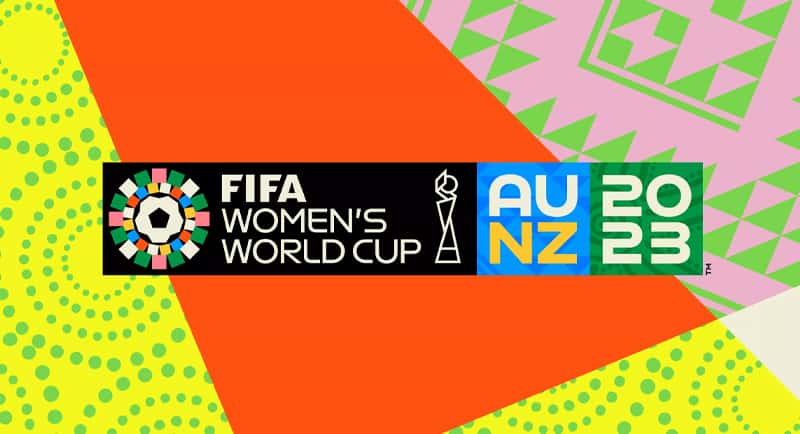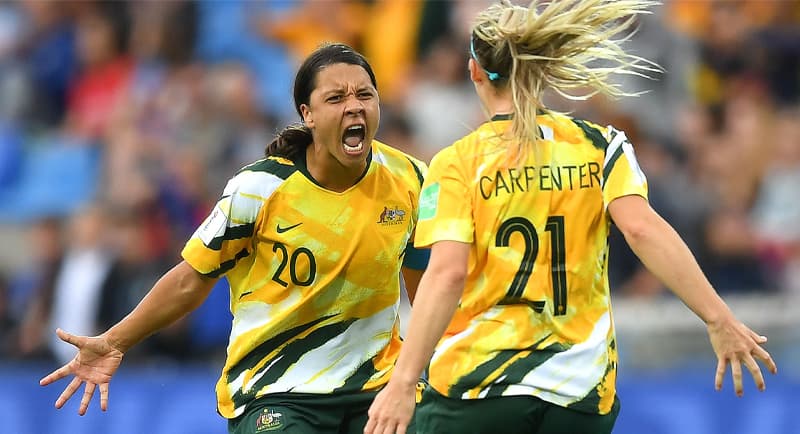Kick-off is imminent for the 2023 FIFA Women’s World Cup, with some of the world’s top athletes descending on Australia and New Zealand to crown the best of the best.
Bringing every triumph and heartbreak – and every minute of Matildas action – to viewers will be Seven, who have teamed up with Optus Sport for the broadcast.
Mediaweek spoke to Seven West Media national sport sales director, Rob Maclean, about what such a massive global event means for advertisers, and how Seven will be making the most of the Women’s World Cup.

Rob Maclean
The Women’s World Cup sees Seven partnering with Optus Sport for the broadcast. For Maclean, both advertisers and viewers are at the heart of the partnership.
“The two businesses have combined to take what is a really unique proposition to market, and our objective was really to come together to unlock the complete audience potential of this Women’s World Cup. We wanted to put the fans first of course, and offer a really broad platform nationally, which could enable brands to connect with a diverse and really fanatical national audience.
“At the heart of our strategy was that wherever fans are watching, whether it’s across Seven, 7plus, or Optus Sport, our partners and sponsors would be there and able to be seen.”
The Seven offering for partners of the Women’s World Cup is anything but run-of-the-mill. Seven have broadcast a number of major events and sports in the past, but the FIFA Women’s World Cup offers what Maclean calls “quite a refined experience for advertisers” due to the fact that that are no ads in play.
“We’ve seen through previous research that fans are 55% more likely to support brands that support women’s sports, we also typically see around a 52% stronger brand recall within a less cluttered broadcast sponsorship environment. So we leaned in really hard to that insight.
“Where that led was essentially taking to market a proposition that involved 10 brands – category exclusive, 10 partners and sponsors only, no spot buying. Effectively, they’re guaranteeing that share of voice as part of one of 10 brands.”
The 10 brands making their mark on the World Cup are partners adidas, Hyundai, Rexona, and Qantas, while the sponsors are Cadbury, Coca-Cola, Kia, McDonald’s, Visa, and Xero.
See Also: Seven and Optus Sport unveil the partners and sponsors kicking goals for the FIFA Women’s World Cup
“Of those 10 brands, eight of them are FIFA commercial affiliate partners, and the other two are Football Australia partners of the Matildas,” says Maclean.
“The key thing here is that these are brands that are heavily invested in the sport itself, have strong associations with women’s sports and football, and will certainly be looking to engage with purpose.”
Women’s World Cup in Total TV
The broadcast of the 2023 FIFA Women’s World Cup is set to highlight the power of Total TV and BVOD reach, with viewers able to catch all the action on Optus Sport and 7Plus, as well as Seven’s free-to-air main channel.
“What we’ve seen historically with football audiences, particularly the Men’s World Cup on SBS, is really strong BVOD audiences,” says Maclean. “We’ve got a 7plus database with close to 13.5 million registered verified users, and we’ve been able to add some new users with recent sporting events such as the ICC World Test Championship.”
For the partners and sponsors on board, Maclean says that “there is little risk in the strategy” due to the fact that their message will follow the content everywhere.
“The way we’ve structured it with our advertisers is very much a Total TV converged proposition. Effectively, they’ve secured their slot amongst our audience – metro, regional, and BVOD – and they will follow the audience. There’s no demographic-specific buying per se, it’s a relevant audience environment, executed at a total people level and fully converged.
“We fully expect this Women’s World Cup broadcast to deliver strong audiences right across the screens of Seven, but ultimately, if BVOD is much stronger than what we anticipate or vice versa with linear, our brands are still being rewarded. We’re recognising that audience wherever fans are consuming the content.”

Ahead of Kick Off
Anybody who has stepped outside in any of the cities hosting a match will have noticed billboards and buildings getting behind the Matildas, and a general buzz of excitement in the air.
“The momentum we’ve seen with women’s sports in this country is certainly growing, over 6 million Australians are a fan of a women’s sporting league,” says Maclean. “Football in this country has come a long way from when Angela Iannotta scored the first goal by an Australian in a World Cup – male or female – in 1995 in front of just 1500 fans.
“The anticipation is there. On Friday night, over 50,000 people – a record crowd – watched the friendly between the Matildas and France, and that’s an exciting sign of things to come. 1.2 million tickets to the tournament have been sold, so this will be the most attended stand-alone sporting event in history. When events are hosted in this country, the interest is around 30 or 40% higher than an event staged overseas.
“You put all those pieces in place, combined with the love of the Matildas and Sam Kerr, and it really is the perfect recipe to deliver audiences at scale.”
